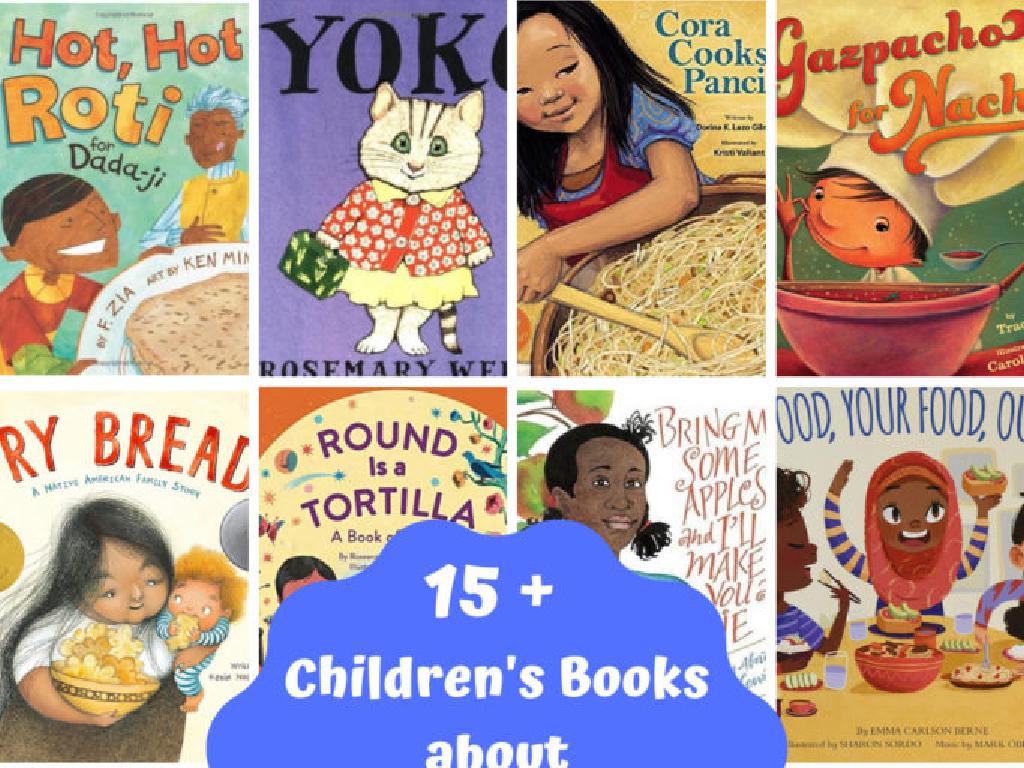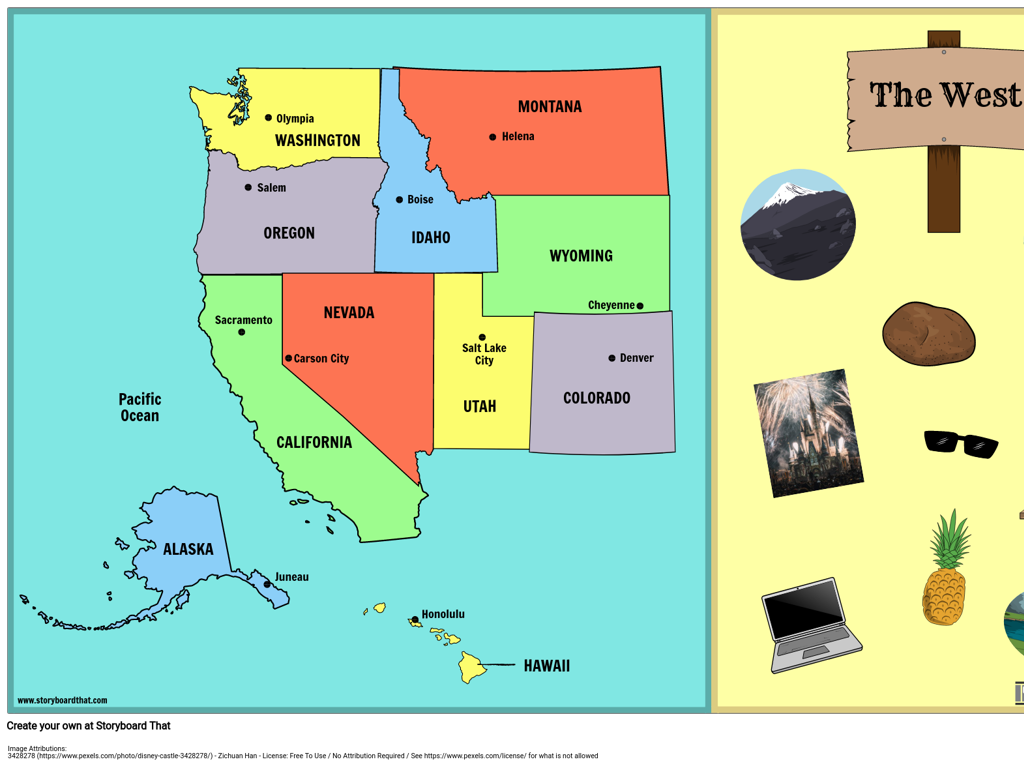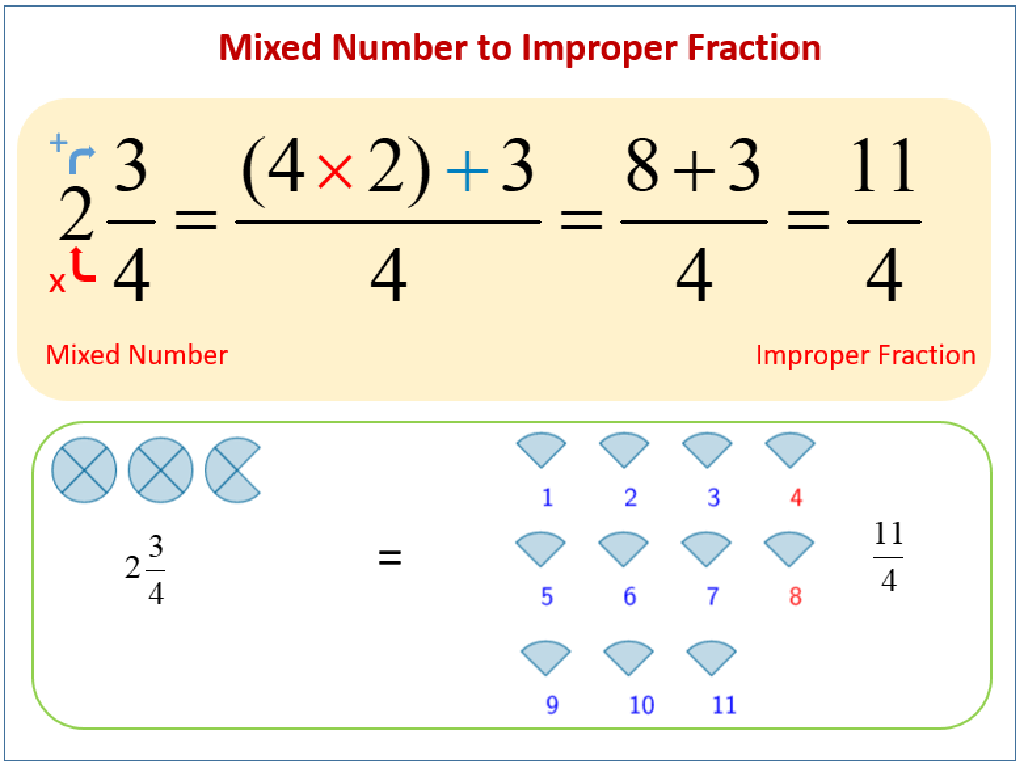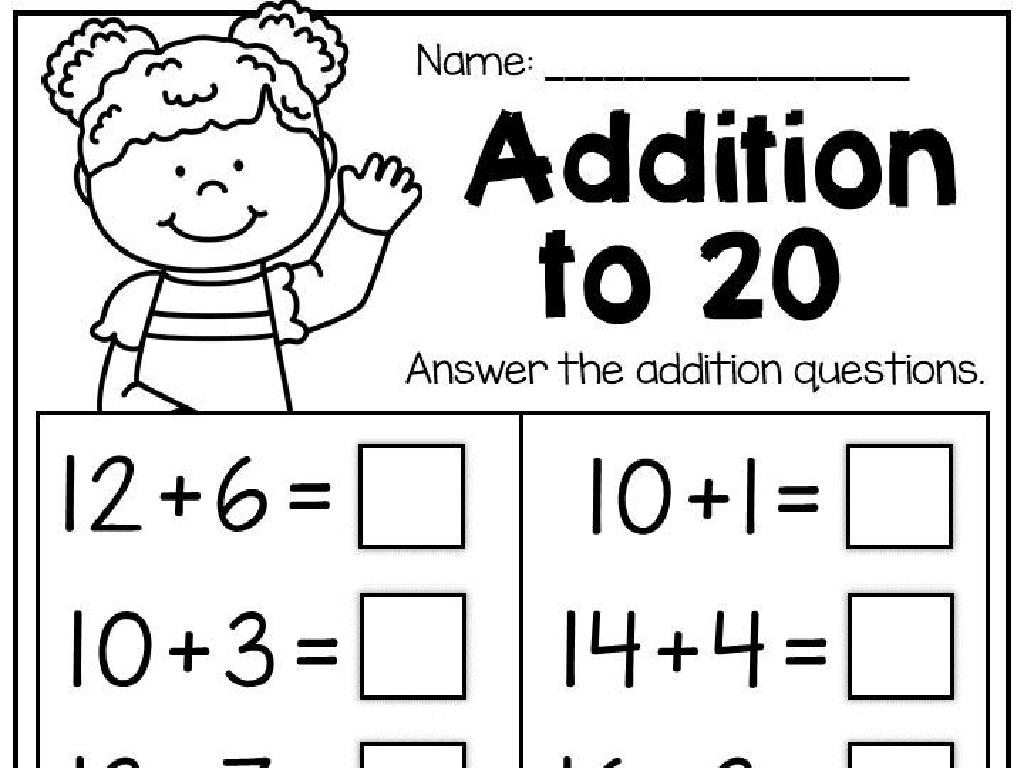Multiply Fractions And Mixed Numbers In Recipes
Subject: Math
Grade: Fifth grade
Topic: Multiply Mixed Numbers
Please LOG IN to download the presentation. Access is available to registered users only.
View More Content
Multiplying Fractions in the Kitchen
– Quick recap on fractions
– Fractions represent parts of a whole, like a slice of pizza.
– Multiplying fractions explained
– To multiply, simply multiply the numerators and then the denominators.
– Cooking: A practical application
– Doubling a recipe? Multiply the fractions to adjust the ingredients.
– Let’s bake with fractions!
– We’ll use fractions to measure ingredients for a cake!
|
Begin with a brief review of fractions to ensure students are comfortable with the concept of parts of a whole. Then, explain the process of multiplying fractions by multiplying the top numbers (numerators) and then the bottom numbers (denominators) of the fractions. Emphasize the real-life application of this skill by discussing how it is used in cooking and baking, such as when doubling a recipe. Engage the students by applying what they’ve learned to measure ingredients for a cake, reinforcing the concept through a fun and relatable activity. This will help solidify their understanding of multiplying fractions and mixed numbers in a practical context.
Multiplying Simple Fractions
– How to multiply fractions
– Multiply the top numbers, then the bottom numbers
– Example: Multiplying 1/2 by 3/4
– 1/2 x 3/4 = (1×3)/(2×4) = 3/8
– Practice Problem: 2/3 x 5/6
– Try multiplying 2/3 by 5/6 on your own
|
Begin by explaining the process of multiplying fractions: multiply the numerators (top numbers) to get the new numerator, and multiply the denominators (bottom numbers) to get the new denominator. Use the example of 1/2 x 3/4 to illustrate this, showing step by step how to arrive at the answer of 3/8. Then, present the practice problem of 2/3 x 5/6, encouraging students to apply what they’ve learned. Walk around the classroom to assist and check for understanding as students work through the problem. This exercise will help solidify their understanding of fraction multiplication in the context of real-world applications like cooking and recipes.
Understanding Mixed Numbers in Recipes
– What is a mixed number?
– Convert to improper fractions
– Multiply the whole number by the denominator, then add the numerator.
– Example: 1 2/3 as an improper fraction
– 1 2/3 equals 5/3 after conversion (1*3 + 2 = 5).
– Practice with recipe measurements
|
This slide introduces students to the concept of mixed numbers, which are numbers consisting of a whole number and a fraction. Understanding how to convert these to improper fractions is crucial when multiplying in recipes, as it simplifies the process. Start by explaining the conversion method: multiply the whole number by the denominator and add the numerator. Use 1 2/3 as an example to demonstrate this process, showing that it becomes 5/3. Then, encourage students to practice with real-life examples, such as doubling a recipe that calls for 1 2/3 cups of an ingredient. This practical application helps solidify their understanding and shows the relevance of math in everyday life.
Multiplying Mixed Numbers in Recipes
– Convert to improper fractions
– Change 1 1/2 to 3/2 and 2 1/3 to 7/3
– Multiply the numerators
– Multiply top numbers: 3/2 x 7/3 = 21/6
– Multiply the denominators
– Multiply bottom numbers: 2 x 3 = 6
– Simplify the answer
– Reduce 21/6 to 3 1/2 for the final answer
|
Begin by converting any mixed numbers to improper fractions to simplify the multiplication process. For example, 1 1/2 becomes 3/2 and 2 1/3 becomes 7/3. Then, multiply the numerators (top numbers) to get the new numerator and the denominators (bottom numbers) to get the new denominator. After multiplying, simplify the fraction by dividing both the numerator and denominator by their greatest common divisor. If the result is an improper fraction, convert it back to a mixed number. For the practice problem, guide students through the same steps: convert 3 3/4 to 15/4 and 1 2/5 to 7/5, multiply to get 105/20, and simplify to 5 1/4 as the final answer. Encourage students to try this method with different recipes to see how the quantities change.
Multiplying Fractions in Recipes
– Why fractions are key in recipes
– How to adjust recipe quantities
– Multiply fractions to increase the amount of ingredients
– Doubling a recipe example
– 1/2 cup sugar doubled is 1/2 cup x 2 = 1 cup
– Practice with recipe adjustments
– Try multiplying ingredients in your favorite recipe
|
This slide introduces the concept of using fractions in recipes, which is essential for precise measurements and successful cooking. Students will learn how to adjust recipes by multiplying fractions to increase the quantity of ingredients, which is a practical application of the math skills they are learning. For example, if a recipe calls for 1/2 cup of sugar and you want to double the recipe, you multiply 1/2 by 2 to get 1 cup. Encourage students to bring in recipes from home and practice multiplying the ingredients to make more servings. This will help them understand the real-world application of multiplying fractions and mixed numbers.
Class Activity: Recipe Conversion
– Convert recipe for 4 to 8 servings
– Work in pairs to multiply fractions
– Use multiplication to adjust ingredient amounts
– Discuss your methods with your partner
– Explain how you determined the new amounts
– Share your new recipe with the class
|
This activity is designed to apply knowledge of multiplying fractions and mixed numbers in a practical setting. Students will work in pairs to convert a recipe intended for 4 servings to one that will serve 8, effectively doubling the amount of each ingredient. Encourage students to discuss their strategies for multiplying fractions and to check each other’s work. As they share their new recipes with the class, they should explain the process they used to arrive at the new measurements. Possible activities for different pairs could include converting recipes for different numbers of servings or using recipes with varying levels of complexity in terms of the fractions involved.
Wrapping Up: Fractions in Recipes
– Review: Multiplying fractions & mixed numbers
– Homework: Double a recipe at home
– Find a favorite recipe and calculate amounts for double the servings
– Write down new ingredient amounts
– Use multiplication skills learned to adjust the recipe
– Next Lesson: Dividing fractions & mixed numbers
|
As we conclude today’s lesson, remind students of the key concepts in multiplying fractions and mixed numbers, especially as they apply to real-world scenarios like cooking. For homework, students should practice these skills by finding a recipe and adjusting the ingredient amounts to serve twice as many people. This will reinforce their understanding and prepare them for the next lesson on dividing fractions and mixed numbers. Encourage creativity in their choice of recipe and ensure they show their work for full credit. Next class, we’ll build on these skills by learning how to divide fractions and mixed numbers, which is another essential skill in cooking and baking.





